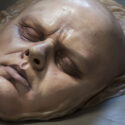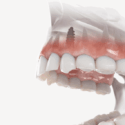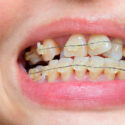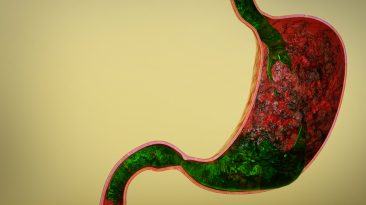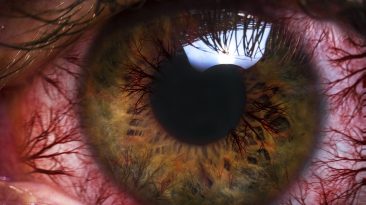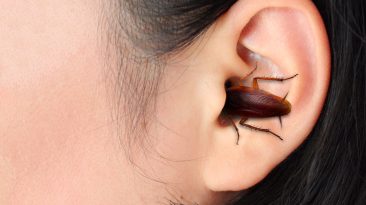Flesh-eating bacteria? Uh oh … you may want to have a seat. This is going to be a doozy. It turns out that you’ve got a problem. You’ve become a walking buffet for an out-of-control bacteria. And it’s trying to eat you alive from the inside out.
What happens if it eats you completely? Are you going to die? And is there any way to stop it?
Bacteria in the human body isn’t always an insidious infection. In fact, we actually need bacteria to survive. The bacteria floating around inside your body outnumber your human-body cells by a hefty 10 to 1.
The “good bacteria” mostly live inside your gut, breaking down food and absorbing nutrients. The trade-off is that for every bit of good that bacteria can do for us, they can also be pathogens, which can lead to infection, sickness, or sometimes even death.
But for this show, we’ve decided that you have “”bad bacteria.”” And I mean really bad bacteria. Flesh-eating disease bad. In fact, you’ve managed to contract the ultimate bad bacteria, necrotizing fasciitis.
But I feel I have to give it to you straight. So here’s what you can expect. After the bacteria enters your body, it rapidly reproduces. Then it emits toxins/enzymes that damage your fascia and soft tissue. To make matters worse, the bacteria can shield itself from your immune system.
This bacteria isn’t messing around. In the early stages of a flesh-eating disease, you’ll feel like you have the flu. I’m talking about nausea, fever, and pain from inflammation.
This typically happens within 24 hours of being infected. Next, you’ll feel even more pain near a wound or opening on your skin.
It doesn’t look too bad, right? Well, here’s the bad news. It hurts A LOT more than it looks. And it only gets worse. In about three days, the nastiness really starts.
The wound or infected area will become swollen, and it may have a purplish rash, which turns into blisters filled with a foul-smelling and dark fluid. The tissue will become discolored, and it may start to become flaky and peel. This means the tissue has bitten the dust.
On day five, your blood pressure will drop severely. You may go into toxic shock, pass out, and even become septic. Then your organs will probably fail, as a complication of the disease. And if you’re not treated in time, that’s it for you.
But let’s say you get to the hospital before the disease really chowed down on you. What sort of treatment could stop this horrific feast?
Well, the one-two punch of antibiotics and surgery to remove dead tissue, for starters. Doctors may also prescribe medications to raise your blood pressure. And they may also give you hyperbaric oxygen therapy to preserve what healthy tissues you have left.
You may need cardiac monitoring, breathing aids, blood transfusions, and intravenous immunoglobulin to help your body fight the infection. And in extreme cases, you may need to have a body part amputated. Yeesh.
OK, so you have a chance of making it out of this in one piece, but here’s the problem. Many bacteria are becoming more resistant to antibiotics. In many diseases, including necrotizing fasciitis, antibiotics are not always enough to stop the bacteria. This means we have to get creative, and come up with new ways of treating dangerous diseases without relying on antibiotics.
So, could we fight fire with fire? Scientists from Imperial College London and Nottingham University Medical School are trying to do just that.
The research teams are testing predatory bacteria to see if they’ll treat infections. This means introducing other bacteria that will consume the original intruder, in order to decrease infection and help the immune system. The circle of bacteria life, I guess?
So, if you find yourself in this nightmarish situation, the best thing you can do is to stay on top of it. And see a doctor immediately. Early diagnosis and treatment is the key to being saved from flesh-eating bacteria. If not, flesh-eating bacteria won’t wait around for you to make a decision.
But what if you could make a diagnosis yourself? What if you had the ability to take a look inside that body of yours, and see what kind of trouble it’s in? Imagine being able to look inside your body?
Sources
- “The Difference Between Good Bacteria And Bad Bacteria”. 2020. hummkombucha.com.
- “Bacteria | What Is Microbiology?”. microbiologysociety.org.
- “Necrotizing Fasciitis (Flesh-Eating Disease)”. 2016. Healthlink BC.
- “Necrotizing Fasciitis (Flesh Eating Disease)”. 2020. Physiopedia.
- “Necrotizing fasciitis: clinical presentation, microbiology, and determinants of mortality”. The Journal Of Bone And Joint Surgery. American Volume 85 (8).
- “Necrotizing Fasciitis (Flesh-Eating Bacteria): Causes, Symptoms, And Treatment”. Webmd.




